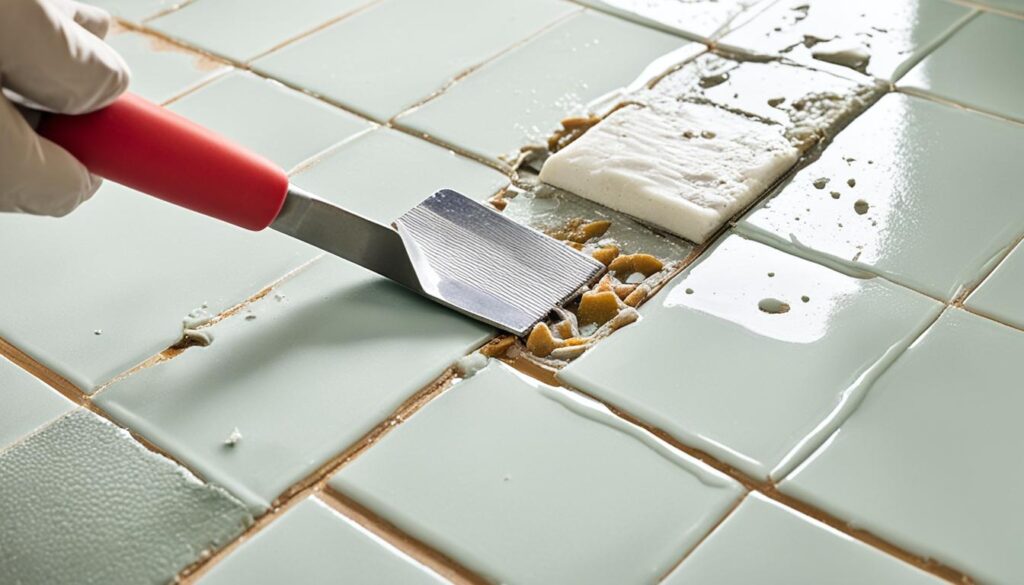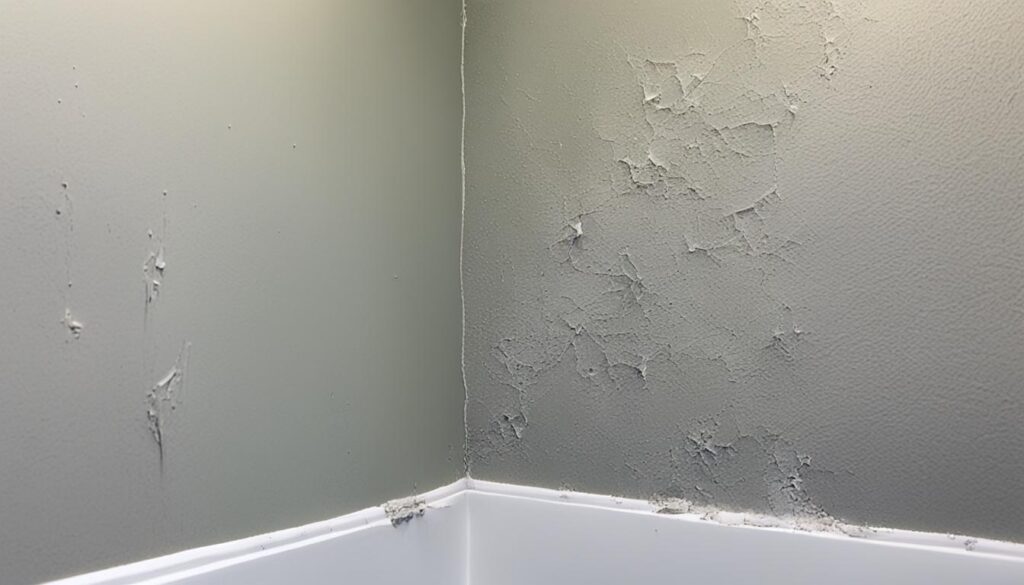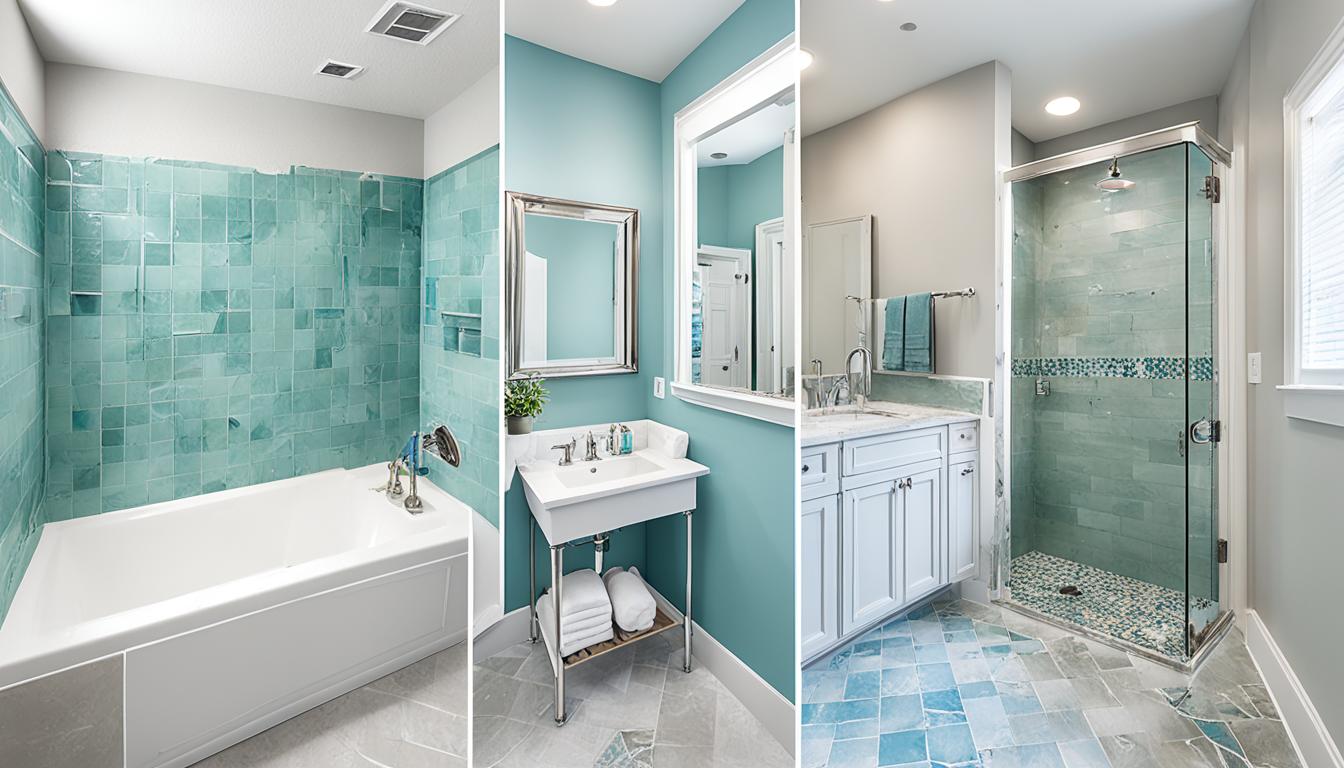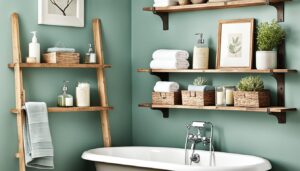When did you last check your bathroom’s condition? Sometimes, a quick look isn’t enough to spot hidden problems. From fixing bathtubs to replacing tiles, knowing why expert bathroom repair matters can save you money. It ensures your bathroom makeover is done correctly from the start.
Key Takeaways
- Proper bathroom repair solutions are crucial to prevent further damage.
- Identifying the common issues early can save time and money.
- Expert work in bathroom renovation ensures longevity and quality.
- Having the right tools and materials makes a significant difference.
- Understanding plumbing and tiling basics can help in DIY repairs.
Understanding the Scope of Bathroom Repairs
Tackling bathroom repairs means knowing the details that make a restoration smooth. Dealing with shower repair and sink repair issues is key for keeping your bathroom working well. It’s important to fix these problems to keep your bathroom in top shape.
Common Bathroom Repair Issues
Faulty showers, leaking sinks, and troublesome toilets often need fixing. They’re not just annoying; they can lead to big water damage. That’s why good plumbing repair work is a must. It keeps everything running right.
- Dripping faucets and troublesome sink repair
- Clogged or leaking toilets that need quick toilet repair
- Showerheads with weak pressure or unpredictable temperatures
These issues are common but need fast and skilled help to avoid bigger problems.
Why Expert Bathroom Repair Matters
It’s important to have an expert for bathroom repairs because the work is complex. Pros have the skills for shower repair and toilet repair. They know how to find and fix hidden problems. Pros are good at plumbing repair, making sure your bathroom works well and looks good.
Experts also offer great advice on what materials and methods to use. This helps your fixtures last longer and reduces repairs. A skilled plumber is key for easy and effective bathroom fixes, no matter the type of fixture.
Essential Tools and Materials for Bathroom Repairs
For effective bathroom repairs, you need special bathroom repair tools and repair materials. They help ensure your project lasts long and looks great. Knowing which tools and materials to use is key.
A top-notch tile cutter is essential for tile work. It makes precise cuts for a perfect fit. Using the right sealants is also key to keep water out and avoid damage.
For plumbing problems, having the right tools is crucial. You’ll need things like pipe wrenches, a plunger, pipe cutters, and plumber’s tape. These tools help fix leaks and pipe issues quickly.
Let’s break down the essential items:
| Category | Tools and Materials |
|---|---|
| Tile Repairs | Tile Cutter, Grout, Replacement Tiles |
| Waterproofing | Sealants, Waterproof Membranes |
| Plumbing Repairs | Pipe Wrenches, Plunger, Pipe Cutters, Plumber’s Tape |
Talking to a professional contractor can help you pick the right repair materials. It makes sure the job gets done well the first time. The right bathroom repair tools and repair materials are crucial for a good and lasting repair.
Bathroom Repair: Plumbing Fixes for Showers, Sinks, and Toilets
In bathroom repair, fixing plumbing comes first. This includes shower repair, putting in sinks, and fixing toilets. Each task needs different skills and knowledge about bathroom plumbing.
Shower Repair Techniques
Shower repair requires good plumbing knowledge. Leaks, clogs, or issues with water pressure are often due to shower problems. Features like steam showers need special care to keep them working right.
Sink Repair and Installation
A sink installation is not just about placing it correctly. It’s about joining plumbing parts right to avoid leaks. The materials and installation style determine how well and long the sink works.
Solving Common Toilet Issues
Fixing toilet issues uses mechanical know-how and hands-on skills. Problems like constant running, clogs, or weak flushes are often due to parts inside the tank or drainage issues. Often, a careful check can save you from bigger repairs.
| Issue | Description | Solution |
|---|---|---|
| Shower Leaks | Water leaking from the showerhead or faucet | Check and replace worn-out washers or o-rings |
| Clogged Sink | Slow or blocked drainage | Use a plunger or plumbing snake to clear the blockage |
| Running Toilet | Water continuously running into the bowl | Adjust or replace the flapper valve and chain |
Tile Repair: A Key Aspect of Bathroom Renovation
When you decide to renovate your bathroom, fixing tiles is key. The right tiles not just look good, they make your bathroom work better and last longer.

Choosing the Right Tile
Choosing tiles means looking at both strength and how they look. Porcelain tiles are great for repairing because they’re strong and easy to look after. By choosing porcelain, you’ll have fewer grout lines in the shower, making it easier to clean. Make sure all tiles come from the same batch to prevent the colors from clashing.
Grout and Sealant: Importance and Application
Using the right grout and sealant makes or breaks a tile repair job. Grout keeps tiles steady and stops water damage. This underlines how important grout is. Using the correct sealant and applying it well keeps tiles looking new longer. Getting help from a pro can lead to the best mix of good looks and durability.
| Tile Type | Durability | Maintenance |
|---|---|---|
| Porcelain | High | Low |
| Ceramic | Medium | Medium |
Dealing with Mold and Mildew: Effective Mold Remediation Tactics
Bathrooms often face mold due to a lot of moisture and poor air flow. It’s key to know why mold forms and how to stop it. Regular checks and upkeep can keep small mold issues from getting worse.
Identifying Mold Issues
Finding mold early is the first step in getting rid of it. Look for black or green spots on walls, ceilings, or in between tiles. A musty smell might mean mold is hiding out of sight. Dealing with these signs early can stop bigger problems.
Steps for Mold Remediation
After spotting mold, these steps can help get rid of it:
- Contain the Area: Close off the space to stop mold spores from moving around.
- Remove Affected Materials: Take out and throw away any porous items like insulation that are moldy.
- Clean and Disinfect: Use products made to kill mold to clean everything well.
- Dry the Area: Make sure everything is dry to avoid more mold. Using dehumidifiers can help reduce wetness.
- Repair and Restore: Put in new materials to fix any damage and get your bathroom back to normal.
Fixing mold correctly makes your bathroom look better and makes the air healthier to breathe. Getting rid of mold in damp areas also keeps you healthy and makes your bathroom last longer.
Drywall Repair in Bathrooms: Handling Moisture Damage
When fixing drywall repair in bathrooms, dealing with moisture damage is key. Bathrooms have a lot of humidity. This can cause mold and damage to the structure. It’s important to fix moisture damage in bathrooms quickly.

A good contractor knows fixing drywall repair is thorough work. They check how bad the moisture damage is. Then, they decide if a simple fix is enough or if replacing drywall is needed.
Using the right materials is essential for bathroom moisture damage. Drywall like green board or cement board is made for high humidity. These materials keep repairs strong for longer.
Good ventilation helps avoid moisture damage too. A powerful exhaust fan lowers humidity. This keeps your bathroom walls safe.
Here’s a quick guide on moisture-resistant drywall:
| Drywall Type | Features | Best Use Cases |
|---|---|---|
| Green Board | Water-resistant, easy to install | Bathroom walls and ceilings |
| Cement Board | High durability, mold-resistant | Shower areas, tub surrounds |
To sum up, successful drywall repair in a bathroom needs careful planning. You have to understand moisture problems and choose the right repair methods and materials.
Ensuring Accessibility and Safety in Bathroom Design
Making a bathroom easy to use for everyone is important. It helps improve life quality for those with limited movement. We do this by adding things like grab bars and non-slip floors.
Installing Grab Bars and Other Safety Features
A key step in making a bathroom safe is putting in grab bars. Place these bars by the shower, toilet, and bath to stop falls and offer support. Adding non-slip mats and good lighting also makes the bathroom safer.
Optimizing Layout for Accessibility
Designing the bathroom so everyone can use it easily is crucial. Making doorways wider, sinks lower, and showers accessible helps everyone. This includes people who are aging or use mobility aids.
| Element | Accessibility Feature | Benefits |
|---|---|---|
| Doorways | Widened to at least 32 inches | Allows wheelchair access |
| Sinks | Lowered and with clear space underneath | Enables use by seated individuals |
| Shower Stalls | Curbless design | Prevents tripping and allows easy entry/exit |
By adding these features, the bathroom becomes a safe, inviting space for all. It boosts both bathroom safety and accessibility in bathroom design.
Cost-Effective Bathroom Repair Tips
Renovating your bathroom doesn’t need to cost a lot. You can save money by using affordable renovation techniques. The trick is to focus on key features and look for cheaper options where you can.
A smart move is to update the parts of the bathroom that stand out the most, like faucets and tiles. Investing in good faucets can significantly enhance the bathroom at a low cost. Picking out affordable tiles that look luxurious can also save you money.
For things you don’t see much, like plumbing under the sink or certain fixtures, go with affordable renovation techniques that still work well. Make sure to plan your buys to get the best deals and cut down on needless costs.
Also, think about how long things will last. Combining quality work where it counts with affordable renovation techniques helps avoid future fixes. With careful planning and smart choices, you can make your bathroom look great without spending too much.
| Feature | Top Priority Elements | Affordable Options |
|---|---|---|
| Faucets | High-quality, modern taps | Cost-effective models with similar finishes |
| Tiles | Stylish, durable tiles | Budget-friendly selections |
| Plumbing | Reliable, long-lasting materials | Affordable yet functional options |
| Hardware | Premium handles and fixtures | Economical alternatives |
Conclusion
We’ve learned a lot about fixing up our bathrooms. Knowing what to repair and how to do it is key. Each choice we make, from the repairs to the tools, is very important. This helps us achieve great results in our bathroom makeovers. It’s also important to think about what you like, safety, and easy access.
Getting help from experts is really useful. They help us avoid mistakes like putting things in wrong or missing damage. When professionals handle the work, our bathrooms not just look good, but they work well and are safe. Fixing a bathroom means using what you know and your skills to make it better for a long time.
Fixing problems like mold and leaks makes our bathrooms healthier and work better. Every choice, like fixing pipes or picking tiles, adds up to make your bathroom just right for you. It supports your daily life and your home in the long run. By using these tips and getting help from experts, fixing up your bathroom can be easy. You’ll love the final result of your carefully fixed and updated bathroom.






